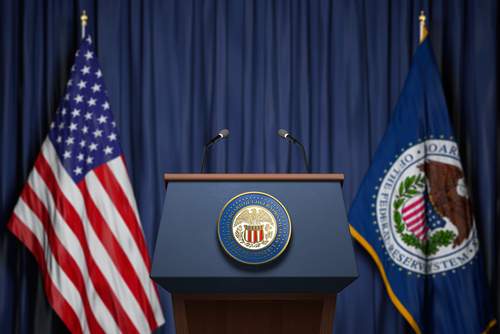On Wednesday, the Federal Reserve completed a two-day meeting. The announcement afterwards met all expectations.The Fed will wind down its bond-buying programs. Interest rate hikes will almost certainly start in March.Even though there were no surprises in the announcement, the Fed did surprise traders by releasing a document called, “Principles for Reducing the Size of the Federal Reserve’s Balance Sheet.”Officials realized their plans would move the markets. They seemed to think providing a list of guiding principles would calm traders’ fears.Much of the document is typical Fedspeak. Lots of words, little content.But one part stands out…
It said, “In the longer run, the Committee intends to hold primarily Treasury securities in the [Fed’s account], thereby minimizing the effect of Federal Reserve holdings on the allocation of credit across sectors of the economy.”This means the Fed could be dumping $2.7 trillion in mortgage-backed securities — another significant holding of theirs — over time. That’s a lot of potential selling in an $11.9 trillion market.Selling started in the stock market as traders were reading through the principles. Then, selling accelerated during Fed Chairman Jerome Powell’s press conference.Powell also added to the impression that there could be a significant policy shift in the coming months.He reinforced the worst fears concerning inflation when he said, “Inflation risks are still to the upside in the views of most FOMC participants, and certainly in my view as well. There’s a risk that the high inflation we are seeing will be prolonged. There’s a risk that it will move even higher.”The S&P 500 dropped nearly 3% between the end of the Fed’s meeting and the end of Powell’s press conference. That drop was consistent with the new monetary environment traders face.Since 2009, the stock market has relied on the Fed to maintain an easy money policy. After this week’s meeting, it seems that policy is changing quickly, probably quicker than anyone anticipated.
This Is Good News for Traders
For traders, it’s important to know that this will increase volatility.
Since March 2009, Fed policy has supported the stock market. Buying bonds created capital for the biggest investment banks. This money was used to fund the trading activities of hedge funds and private equity deals, among other things.That activity affected valuations and explained why the S&P 500’s price-to-earnings ratio has been above average for most of the past 10 years.Going forward, the Fed’s statements indicate it won’t be supporting the stock market. This means valuations will return to normal. Earnings are expected to grow rapidly, so the change in valuation doesn’t mean we must see a bear market.Without the Fed pushing prices ever higher, we will see more price swings than we have in the past. After 12 years of moving almost continuously higher, stocks will now move both up and down.This is great news for traders, since we can benefit from price swings. It’s bad news for long-term investors who need to start brushing up on valuation models and worrying when their holdings are overvalued.The best trade for the new Fed policy looks to be put options on iShares MBS ETF (MBB) — which holds a basket of investment-grade mortgage-backed securities.As the Fed unwinds that balance sheet, MBB prices could be hard hit. But this will take time to unfold. Use the monthly September $105 puts to provide time for traders to continue reacting to the Fed’s announcement.Regards,
Chart of the Day:“Highest Since Q1 2020” Never Sounds Good
(Click here to view larger image.)
Today we’re looking at the CBOE Put/Call Ratio. This figure essentially shows how bullish or bearish options traders are at any given time. When the value is greater than 1, traders are buying more put options than call options, and vice versa.This chart is a great way to gauge market sentiment. As you can see, the put/call ratio hasn’t been this high since the pandemic panic in Q1 2020. And the ratio started climbing way back in late February 2020.But just because things are extreme now, doesn’t mean they’re going to turn around automatically. The put/call ratio back then shows us that bearish sentiment can reach major extremes, with the ratio breaching 3 at one point (3 times as many puts as calls were traded).As for what’s going to happen now, I hate to say it, but it’s hard to tell. Things can clearly get a lot more bearish in the short term. What we’re seeing today isn’t what I would call an “extreme” by any means.But what you can expect is, if we get to those extremes, for sentiment to quickly change in the opposite direction. Look at all the long wicks left behind during the pandemic panic. Traders who stayed bearish too long got blindsided when sentiment shifted, even momentarily.As Mike Carr said today, this is a volatile market where nimble traders will win out. And watching indicators like the put/call ratio will help you know when to expect reversals.Regards,
